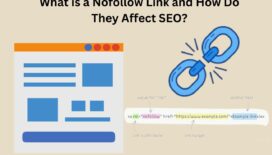
What Are Crawl Errors & How Do They Affect SEO?
If you also want your website to rank higher in search engine result pages then the priority should be the comfortable crawl of the website. Why so? Well! Because it’s the first step in getting your website’s content discovered by search engines. If a website isn’t crawled, it can’t be indexed, and thus won’t appear in search results.
What are crawl errors, and how do they affect the SEO of your website? Let us find out in this guide.
What are Crawl Errors?
What is the main aim of creating a website? Most probably to reach most of the potential customers and invite more sales and profits, right? What if the website is not doing what it was supposed to do? Reaching potential customers is the first and foremost step to increase sales.
Crawl errors are issues that prevent search engines from successfully crawling and indexing web pages. Google Search Console (GSC) provides reports on crawl errors, allowing website owners to identify and fix them.
Crawl errors occur when search engine crawlers, like Googlebot, face problems while trying to access and index your website’s pages. These errors can stop search engines from properly crawling your site, leading to reduced visibility in search results. Essentially, if Googlebot can’t access a page, it can’t index it, and your page won’t appear in search results.
How Crawl Errors are Affecting Your SEO?
It is essential for search engines to crawl your website comfortably because crawling is the first step in getting your website indexed, which is necessary for it to appear in search results. Imagine spending long hours on making a website successful, but it is not appearing in the search results. It hurts, and we understand this, which is why professional SEO Services are necessary to achieve the goal.
Crawl errors significantly impact SEO by preventing search engines from accessing and indexing website pages, which directly affects ranking potential and organic traffic. These errors, when encountered by search engine bots, can block important pages from appearing in search results, hindering a website’s visibility and overall SEO performance.
Here is more information regarding how crawl errors affect SEO:
- Crawling allows search engines to discover and index content. If a page is not crawled due to an error, it won’t be indexed, meaning it won’t appear in search results, which clearly affects the entire point of making a website.
- Frequent or severe crawl errors can signal to search engines that a website is poorly maintained, potentially leading to lower rankings in search results.
- Failing to crawl and index pages directly translates to a loss of potential organic traffic, as users won’t be able to find those pages through search.
- You must have seen 404 errors once while searching, right? Some crawl errors, like 404 errors, can negatively impact user experience if visitors encounter them while navigating a website.
The next question that comes to mind is, “How to fix these crawl errors?”.
How to Fix Crawl Errors?
Here we will discuss how you can fix these crawl errors and allow the website to welcome potential customers and increase the effectiveness of their experience:
-
Identifying These Errors
Coverage report can be used to view crawl errors, including 404 errors, server errors, and redirects. Tools like SEMrush or Search Atlas can scan your site and identify various crawl errors.
-
Common Crawl Errors and How to Fix
For 404 errors, these occur when a page is not found. Use 301 redirects to send users to a relevant page. Eliminate broken links pointing to the missing page. If a page was accidentally deleted and is still relevant, restore it. Provide a user-friendly 404 page with navigation options.
For redirect errors that can occur when redirects are not set up clearly, you need to simplify chains of redirects to go directly to the final destination. Also, ensure redirects don’t loop back on themselves.
Soft 404 errors occur when a page returns a 200 status code but is effectively a 404. Fix these by making sure the page has actual content and isn’t just a placeholder.
For Robots.txt/Meta Tags Issues, check for incorrect robots.txt rules or noindex tags that might be preventing crawling.
-
Validate and Submit Changes Made
After making changes, use the “Validate Fix” option in Search Console to confirm the errors are resolved. Use the “URL Inspection” tool to request re-indexing of fixed pages. Resubmit your sitemap in Search Console to help search engines discover and crawl your updated content.
You can take the help of professionals who can help you make an effective website and fix the errors.
Follow us
Recent post
Popular post
- How To Call Batch Apex By Scheduler Class Within Salesforce
- What Is The Importance Of Google Algorithm Updates
- How To Create Dynamic Dependent Picklist Of Objects Within Salesforce
- What Is Wrapper Class & How To Use It In Salesforce
- How To Create Pagination Within Salesforce
- Tips For Hiring A Good Offshore Drupal Development Company
- Web Development Mistakes That Affect Your Online Reputation
- How To Integrate Google Maps Into Your Salesforce Software
- Check Your Link Building Strategy For 2014
- Tips For Selling Products Through Social Networking
- How To Create A Chart With Salesforce
- Benefits of Using India For Outsourcing & Offshore Development
- How To Integrate Salesforce With Facebook
- What Is Service Cloud Console In Salesforce & How To Enable It
- Superior Offshore Web Development At A Reasonable Cost
- How To Create Bucket Fields In Your Salesforce Reports
- 5 Things To Consider When Hiring A Drupal Developer
- Growth Of E-commerce Website Development
- Challenges In Hiring An Offshore Web Development Company
- 10 Tips When Creating Batch Apex In Salesforce
- What To Include & What To Exclude In SEO Plans
- How To Create An Opportunity Using A Visualforce Page In Salesforce
- Hire An Offshore Ruby On Rails Development Company Over A Freelancer
- Hire Drupal Developers Offshore To Increase Your Capabilities
- Effective SEO In A Post Panda Update – The Rules Have Changed
- Common Mistakes In Offshore Web Development
- What To Consider While Hiring A Dedicated Ruby On Rails Developer?
- Smart Phone & Tablet User Penetration
- Tips For Hiring A Good Offshore PHP Development Company
- Why Responsive Web Design Is Essential For Your Business
- How To Email Documents From Salesforce
- Website Development And Website Design Company India
- Why Work With An Offshore Development Company?
- How To Create Tab Panel In Salesforce
- How To Avoid 5 Common Off-Page SEO Mistakes
- The Multi-Billion Dollar Offshore Software Development Industry
- What Are The Advantages Of Digital Marketing Over Traditional Marketing?
- SEO & Conversational Keyword Search
- How To Avoid 5 Common On-Page SEO Mistakes
- How To Add Google Authorship And Its Benefits For Better SEO
- What’s Better For Facebook Ads: CPC Or CPM?
- Questions To Ask Your Potential Search Engine Optimization Partner
- How To Create Batch Apex In Salesforce
- Benefits Of Offshore PHP Development For Your Businesses
- Offshore Magento Development Means More Than Just Development Help
- Why You Should Consider Hiring Joomla Developers Offshore
- What To Look For When Hiring A Dedicated OpenCart Developer
- Stop Using Free Web Templates – Hire A Web Development Company
- How To Manage An Offshore Development Company?
- Hire Offshore Software Professionals To Help Your Business
- Offshore Development Is A Sensible Solution For Recessionary Times
- Why You Should Offshore Your Joomla Website Development
- 5 Tips To Help You Hire A Good Offshore PHP Development Company
- Reasons Why Salesforce CRM Customization Is Easy
- PHP Development – Turn Your Website Into A Multi-Featured Web Application
- 5 Things To Ask A Web Development Company Before Starting Work
- How A Multifaceted Web Development Company Can Help You?
- Take Advantage By Hiring A PHP Development Company From India
- Use Social Media Marketing To Improve Your Brand Identity
- Hiring Dedicated Developers From Offshore Development Companies
- See Measurable Results By Hiring Dedicated Ruby On Rails Developer
- Avoid 4 Common WordPress Development Mistakes
- Can “Developed By” Links Hurt Your SEO?
- How To Get All Salesforce Components In Force.com IDE
- The Manifold Advantages Of Working With An Offshore Web Development Company
- Web Development Company In India Defined
- Hire A Dedicated Drupal Developer To Develop A High Performance CMS
- Offshore Development – The Most Beneficial And Cost Effective Way To Outsource Your Business
- What To Look For When Hiring An Offshore Development Company
- Why Dedicated PHP Web Developers Are In Demand
- How To Avoid Some Common Mistakes When Working With An Offshore Web Development Company
- How To Choose An SEO Company
- Factors To Consider When Hiring Offshore Developers In India
- What To Look For When Hiring Dedicated Magento Developers
- Why Google Create Its Own Title Instead Of Using Yours
- 3 Challenges of Working with an Offshore Web Development Company
- Why Ruby On Rails Development Has Become Popular
- Why Hire A Web Development Company That Also Offers SEO
- 10 Tips And Tricks For Salesforce
- Are Back-links Losing Their Importance To Google Search Rankings
- The Significance Of A Salesforce Developer
- 4 Reasons to Hire A Web Development Agency Over A Freelancer
- Hire A PHP Developer- How Outsourcing Can Be A Key To Success
- Importance Of Strategic Digital Marketing For Business Growth
- Factors To Keep In Mind Before Hiring Dedicated Magento Developer
- Web Development India – For Prompt And Accurate Services
- Looking For An Offshore PHP Development Company, Where Do I Begin?
- 5 SEO Myths
- How To Choose A Company When Hiring Dedicated PHP Developers
- Why You Should Optimize For Local Search
- Hiring Offshore WordPress Developers Can Help Your Business
- How To Use Social Networking To Market Your Business
- Why Offshore Web Development To India Makes Business Sense
- 5 Factors To Consider When Hiring A Web Development Company
- Top Five Benefits Of Salesforce
- Benefits Of Hiring A Dedicated PHP Developer From India
- Using SEO & Social Media Together
- How Can An SEO Company Help Your Profile Online
- Strategic Importance Of Mobile SEO
- Choose The Social Media Network That Suits Your Business
Archives
- December 2025
- November 2025
- October 2025
- September 2025
- August 2025
- July 2025
- June 2025
- May 2025
- April 2025
- March 2025
- February 2025
- January 2025
- December 2024
- November 2024
- October 2024
- September 2024
- July 2024
- June 2024
- May 2024
- April 2024
- March 2024
- February 2024
- September 2023
- August 2023
- July 2023
- June 2022
- May 2022
- March 2022
- January 2022
- August 2021
- July 2021
- June 2021
- May 2021
- January 2021
- December 2020
- September 2020
- August 2020
- July 2020
- June 2020
- April 2020
- March 2020
- December 2019
- November 2019
- October 2019
- September 2019
- August 2019
- July 2019
- June 2019
- May 2019
- April 2019
- March 2019
- February 2019
- January 2019
- December 2018
- November 2018
- September 2018
- April 2018
- February 2018
- January 2018
- September 2017
- August 2017
- July 2017
- June 2017
- May 2017
- April 2017
- March 2017
- February 2017
- January 2017
- December 2016
- November 2016
- October 2016
- September 2016
- August 2016
- July 2016
- June 2016
- May 2016
- April 2016
- March 2016
- February 2016
- January 2016
- December 2015
- November 2015
- October 2015
- September 2015
- August 2015
- July 2015
- June 2015
- May 2015
- April 2015
- March 2015
- February 2015
- January 2015
- December 2014
- November 2014
- October 2014
- September 2014
















